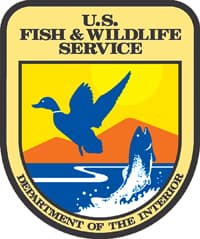Innovative Oak Habitat Restoration Project in Oregon and California Receives National Award
OutdoorHub 10.18.12

In recognition of its outstanding contributions to habitat restoration, the Central Umpqua-Mid-Klamath Oak Habitat Conservation Project on Thursday received a Partners in Conservation award from the U.S. Department of the Interior.
The 23-member partnership was recognized for working to restore more than 2,000 acres of oak woodland ecosystems in Douglas and Jackson counties in Oregon and Siskiyou County in California.
Led by Lomakatsi Restoration Project of Ashland, Oregon, the partnership is working with 20 private landowners to remove encroaching conifers, reseed native grasses and use prescribed fire to restore oak environments on private properties that provide important connectivity to surrounding federal lands. The project, started in October 2011, is expected to be completed in 2013.
“The Partners in Conservation Awards offer wonderful examples of how America’s greatest conservation legacies are created when communities from a wide range of backgrounds work together,” said Hayes, who announced the winners at an award ceremony at Interior today. “These awards recognize dedicated citizens from across our nation who collaborate to conserve and restore America’s Great Outdoors, to encourage youth involvement in conservation and to forge solutions to complex natural resource challenges.”
Oak habitat has been identified as the primary habitat in the Pacific Northwest for terrestrial neo-tropical migratory birds. In Oregon and California, oak woodlands and savannas are richer in wildlife than any other terrestrial system, providing habitat for more than 200 species and many plants and other organisms. However, over time, development and the exclusion of fire has fragmented, degraded and reduced the availability of this habitat. It is now one of the most threatened ecosystems in the Pacific Northwest.
The partnership initiative uses existing local workforce programs such as the Klamath Tribal Restoration Workforce in implementing restoration projects. Local workers and youth crews also are employed in restoration projects. Integrating local communities and indigenous stakeholders in restoring habitat for federal trust species is an important component of this innovative partnership.
“The strength of this initiative is that instead of taking a piecemeal approach to resource management, the partners are focusing their efforts toward restoring oak habitats through connected landscapes and corridors,” said Robyn Thorson, Regional Director of the U.S. Fish and Wildlife Service’s Pacific Region. “Their collaborative approach brings in expertise and good science from all participating partners and helps leverage funding to achieve better restoration.”
The Natural Resources Conservation Service provided $1.8 million in funding and project partners leveraged over $2 million in other funds and contributions, including more than $600,000 from the Service
“Building strong, effective partnerships is vital to landscape-level conservation, and this project is a great example of how public and private organizations are working together to achieve real success for the many species that depend on the oak woodlands of the Klamath and Umpqua Basins,” said Ren Lohoefener, Regional Director of the Service’s Pacific Southwest Region.
Current estimates indicate that less than 10% of the historic oak habitats remain in Oregon and northern California. Remaining oak habitats face a variety of stressors, and under such conditions are at risk of disappearing without changes being made to their current management. The Central Umpqua-Mid Klamath Project provides financial benefits to landowners to install conservation practices on their property that protect, enhance or restore declining oak habitats.
“This cutting edge, collaborative conservation effort brings together a coalition of nonprofit organizations, landowners and federal and state natural resource management agencies who share a collective mission and interest in improving the condition and function of oak woodland habitats,” said Marko Bey, Director of Lomakatsi Restoration Project. “This project demonstrates a model for accomplishing landscape -scale ecosystem restoration where project partners share resources and expertise for conserving a critically important habitat for wildlife.”
Core members of the Central Umpqua-Mid-Klamath Partnership are comprised of representatives of Lomakatsi Restoration Project, Natural Resources Conservation Service, the U.S. Fish and Wildlife Service, and Klamath Bird Observatory.
Subsidiary partners include, The Klamath Tribes, Northern California Resource Center, Douglas County Soil & Water Conservation District, Bureau of Land Management, The Nature Conservancy, California and Oregon Departments of Fish and Wildlife, California and Oregon Departments of Forestry, Oregon State University Extension Services, Jackson Soil and Water Conservation District, Defenders of Wildlife, Colestin Rural Fire Department, Jackson County Small Woodlands Association, Southern Oregon Land Conservancy, Oregon Oaks Working Group and numerous private landowners.
Additional information about the Central Umpqua-Mid-Klamath Oak Habitat Conservation Project visit: http://lomakatsi.org/oak-habitat-restoration/

